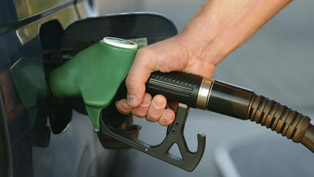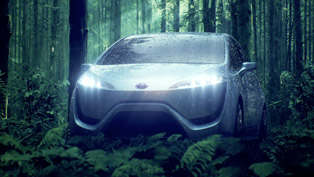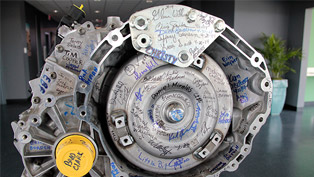Dual-Clutch Transmissions – The transmission of the future?
 Most people know that automobiles come with two basic transmission types; first there are manual transmissions which require that the driver change gears by depressing a clutch pedal and using a stick shift and then there are automatics which do all of the shifting work using a torque convertor and sets of planetary gears. But there's also something in between that offers the best of both worlds -- the dual-clutch transmission (DCT). This article will explore how a dual-clutch transmission works, how it compares to other types of transmissions and why some predict that it is the transmission of the future.
Most people know that automobiles come with two basic transmission types; first there are manual transmissions which require that the driver change gears by depressing a clutch pedal and using a stick shift and then there are automatics which do all of the shifting work using a torque convertor and sets of planetary gears. But there's also something in between that offers the best of both worlds -- the dual-clutch transmission (DCT). This article will explore how a dual-clutch transmission works, how it compares to other types of transmissions and why some predict that it is the transmission of the future.
A dual-clutch transmission offers the function of two manual gearboxes in one. To understand what this means, it's helpful to review how manual gearboxes work. When a driver wants to change from one gear to another, he first presses down the clutch pedal. This operates a single clutch, which disconnects the engine from the gearbox and interrupts power flow to the transmission. Then the driver uses the stick shift to select a new gear. Once the new gear is engaged, the driver releases the clutch pedal, which re-connects the engine to the gearbox and transmits power to the wheels.
A dual-clutch gearbox, by contrast, uses two clutches, but has no clutch pedal. Sophisticated electronics and hydraulics control the clutches, just as they do in a standard automatic transmission. In a DCT, however, the clutches operate independently. One clutch controls the odd gears (first, third, fifth and reverse), while the other controls the even gears (second, fourth and sixth). Using this arrangement, gears can be changed almost instantly without interrupting the power flow from the engine to the transmission.
Some explain that a DCT is an "automated manual transmission." In principle, the DCT behaves just like a standard manual transmission: It's got input and auxiliary shafts to house gears, synchronizers and a clutch. What it doesn't have is a clutch pedal, because computers, solenoids and hydraulics do the actual shifting. Even without a clutch pedal, the driver can still "tell" the computer when to take action through paddles, buttons or a gearshift.
Perhaps the most compelling advantage of a DCT is improved fuel economy. Because power flow from the engine to the transmission is not interrupted, fuel efficiency increases dramatically. Some experts say that a six-speed DCT can deliver up to a 10 percent increase in relative fuel efficiency when compared to a conventional five-speed automatic.
Many car manufacturers are interested in DCT technology. However, some automakers are wary of the additional costs associated with modifying production lines to accommodate a new type of transmission. This could initially drive up the costs of cars outfitted with DCTs, which might discourage cost-conscious consumers.
Source: Honda of Tiffany Springs








